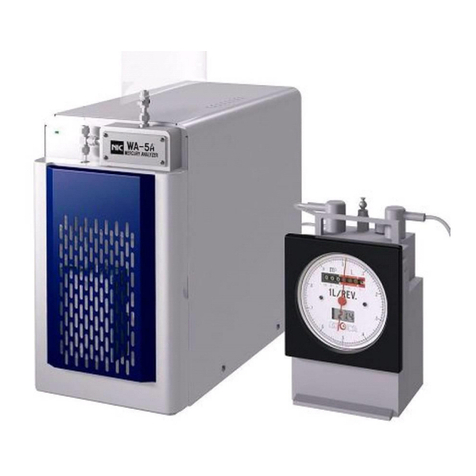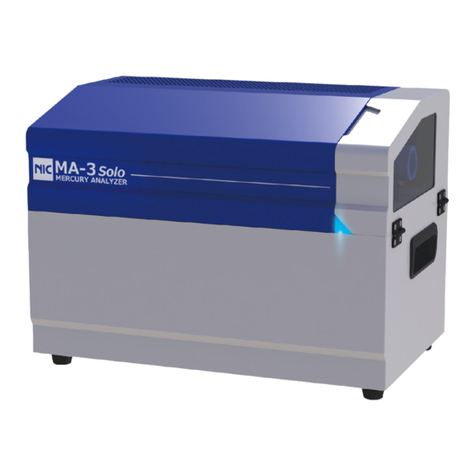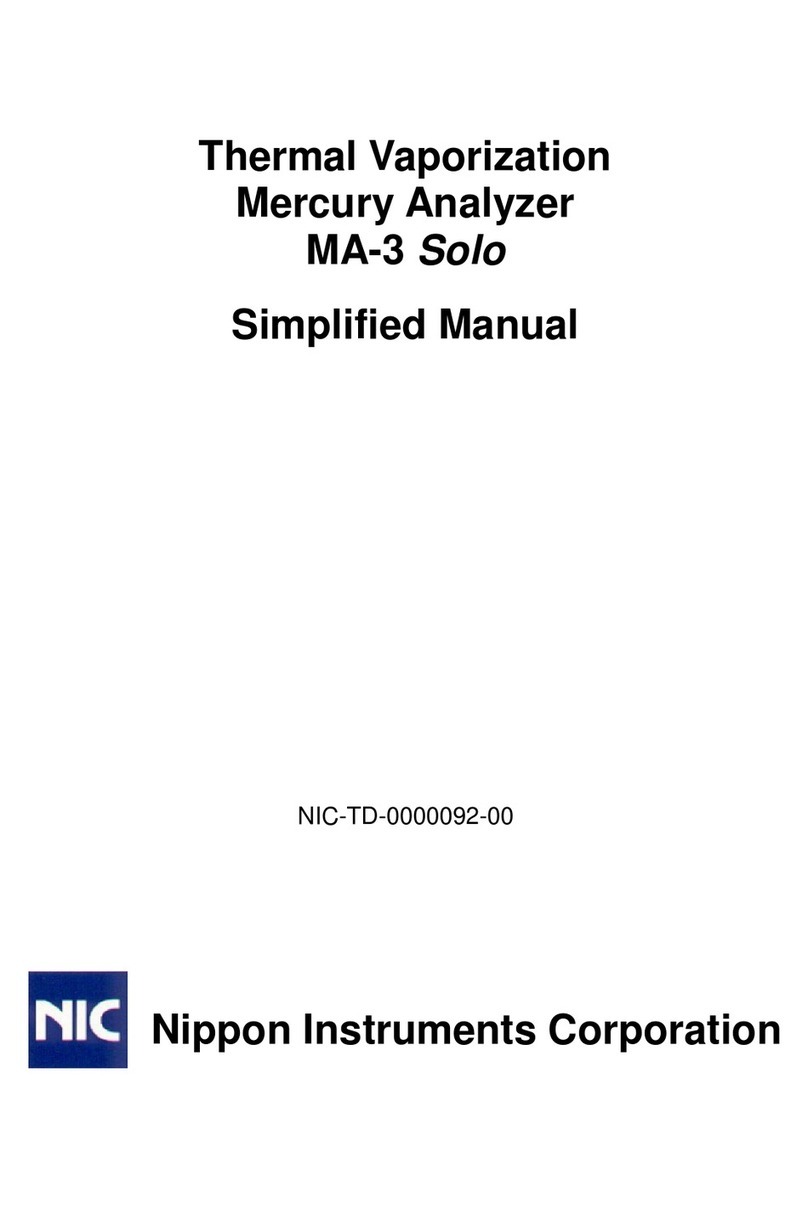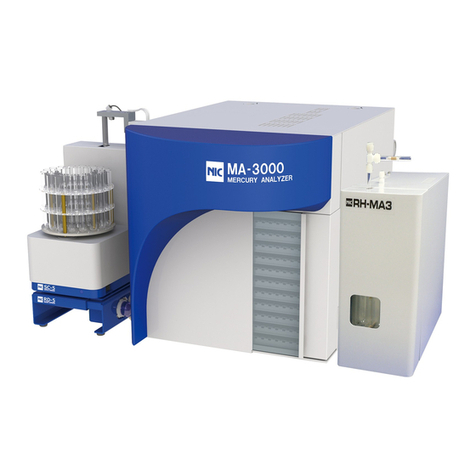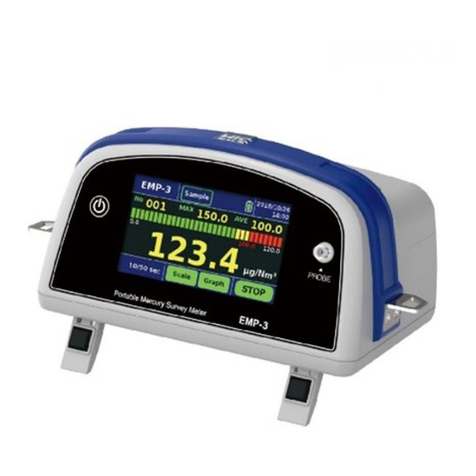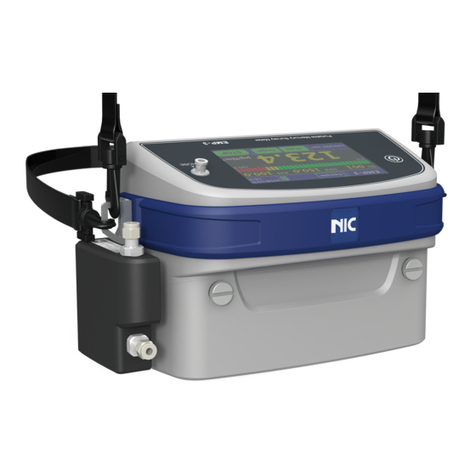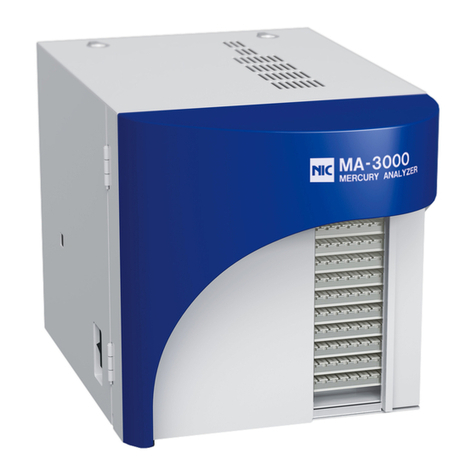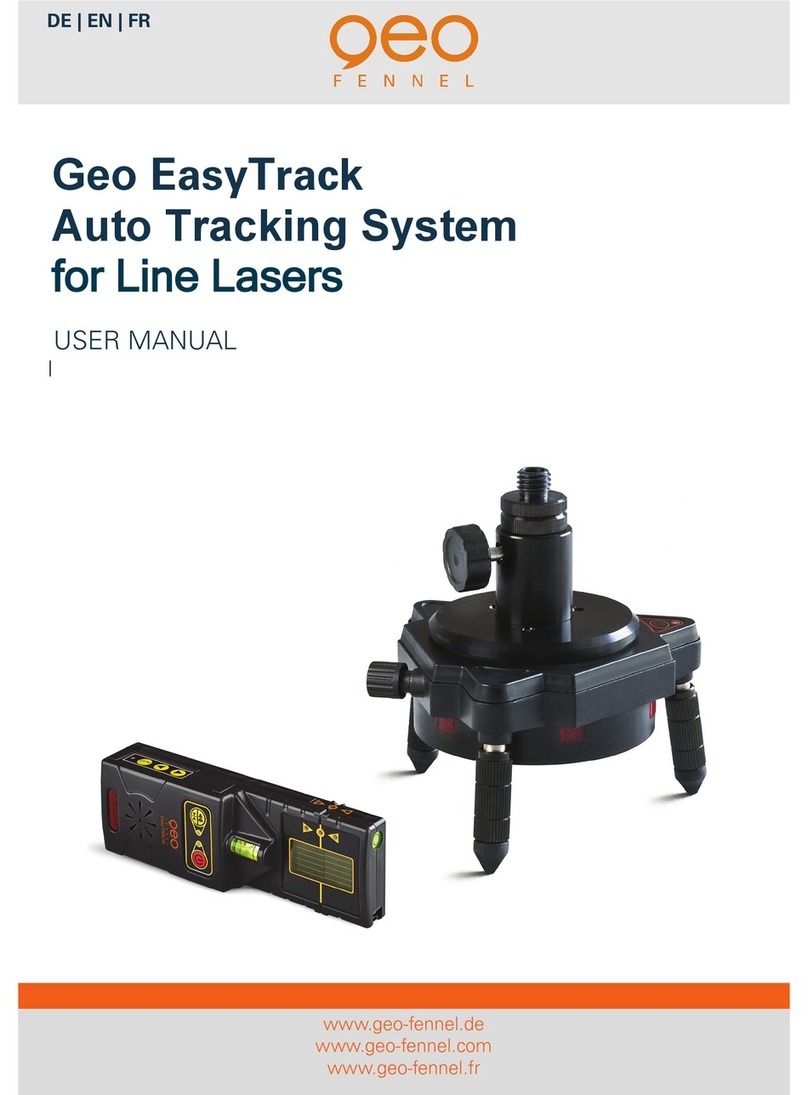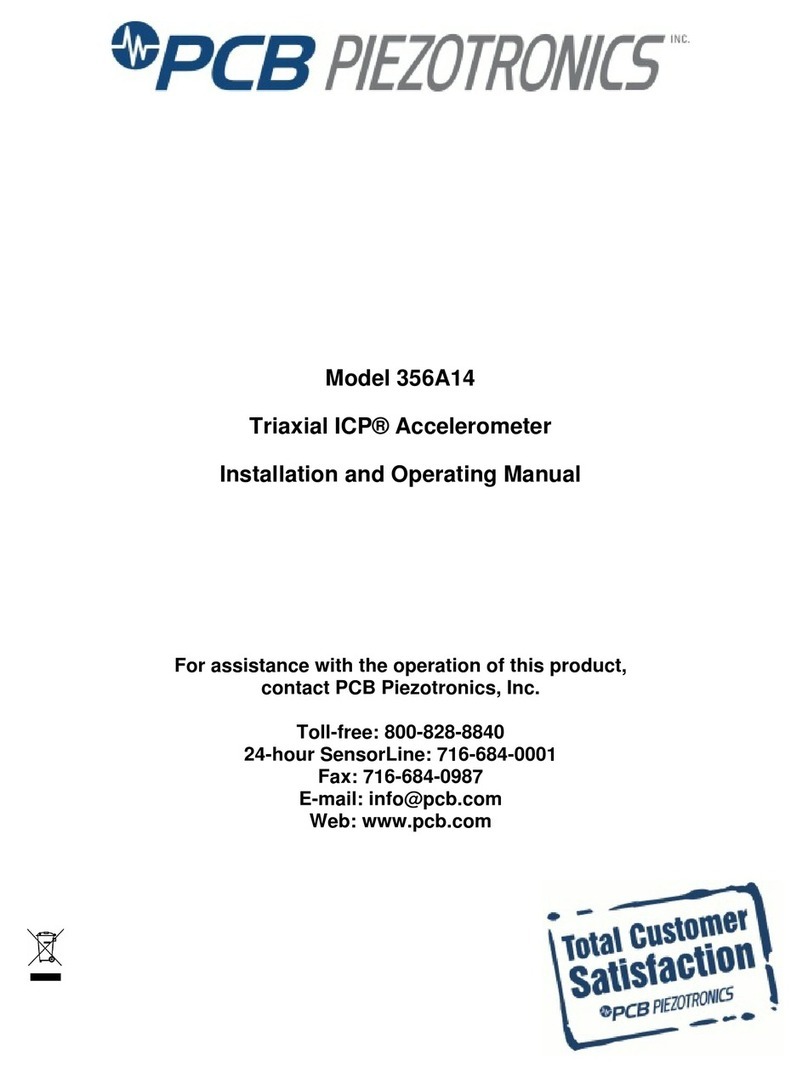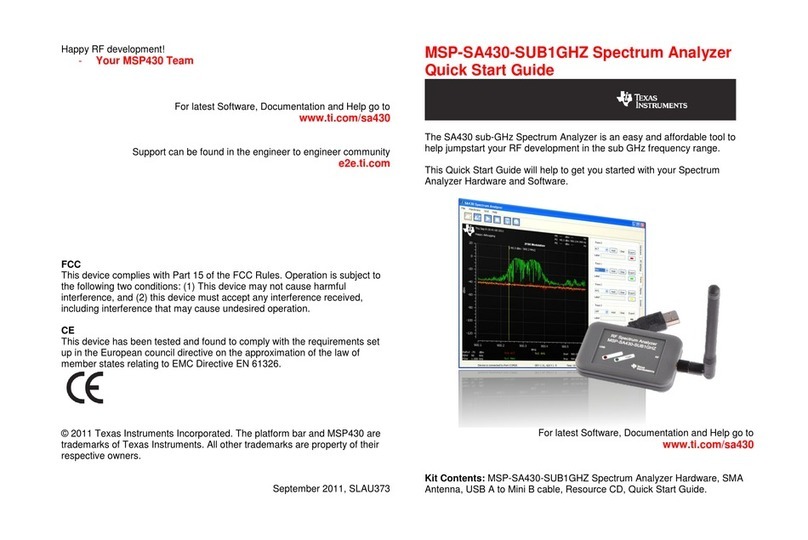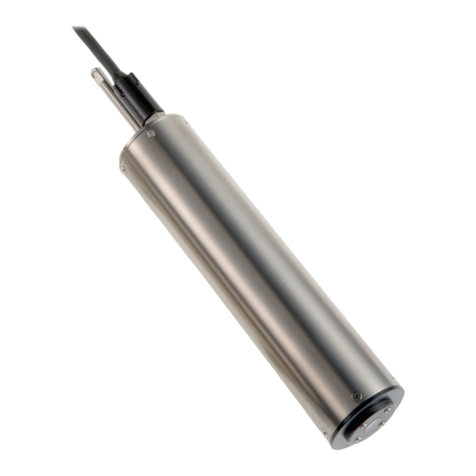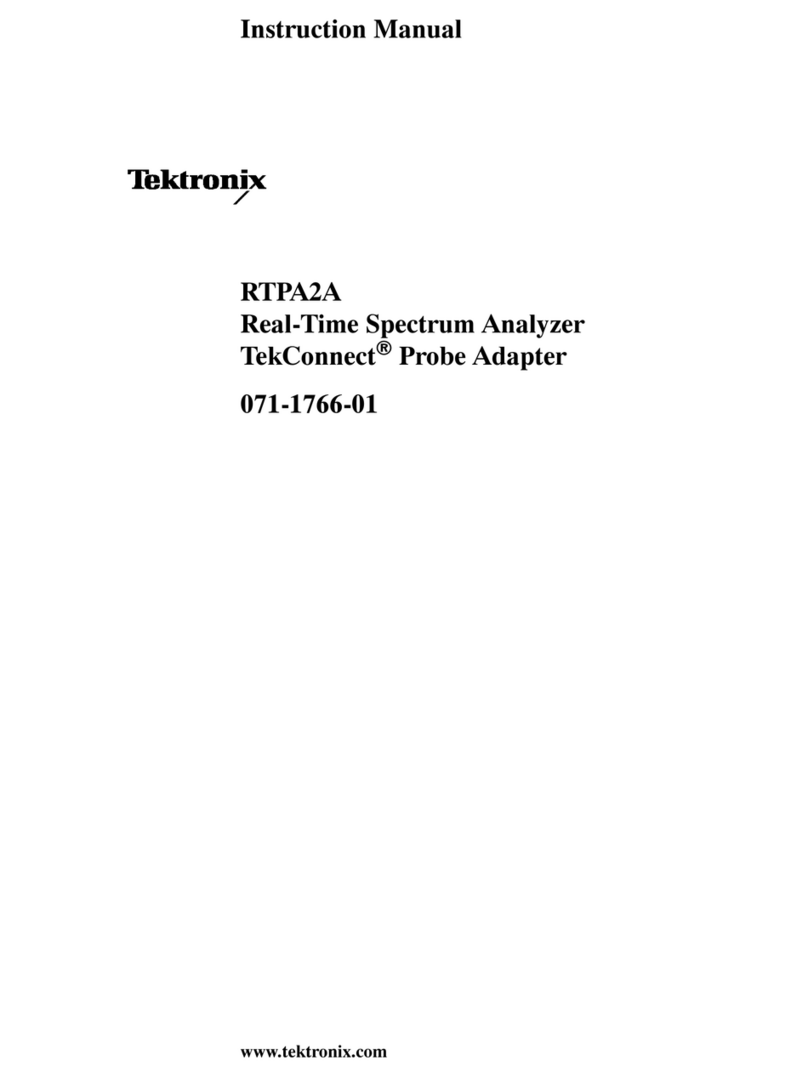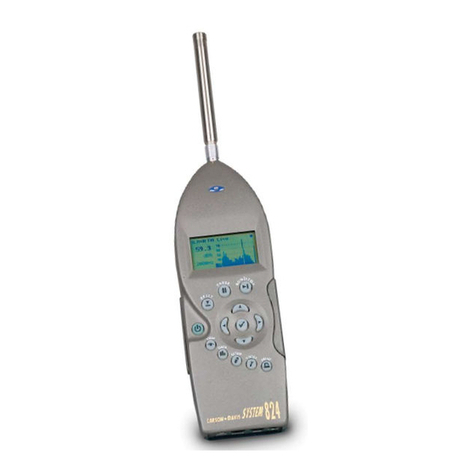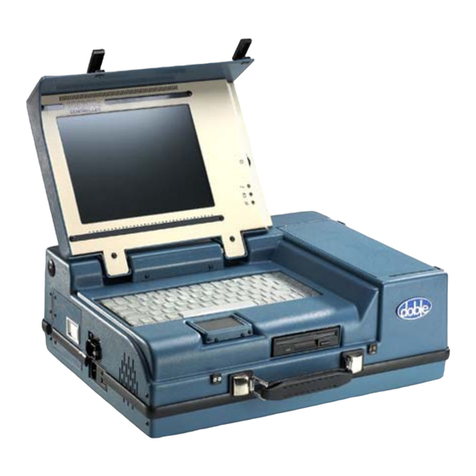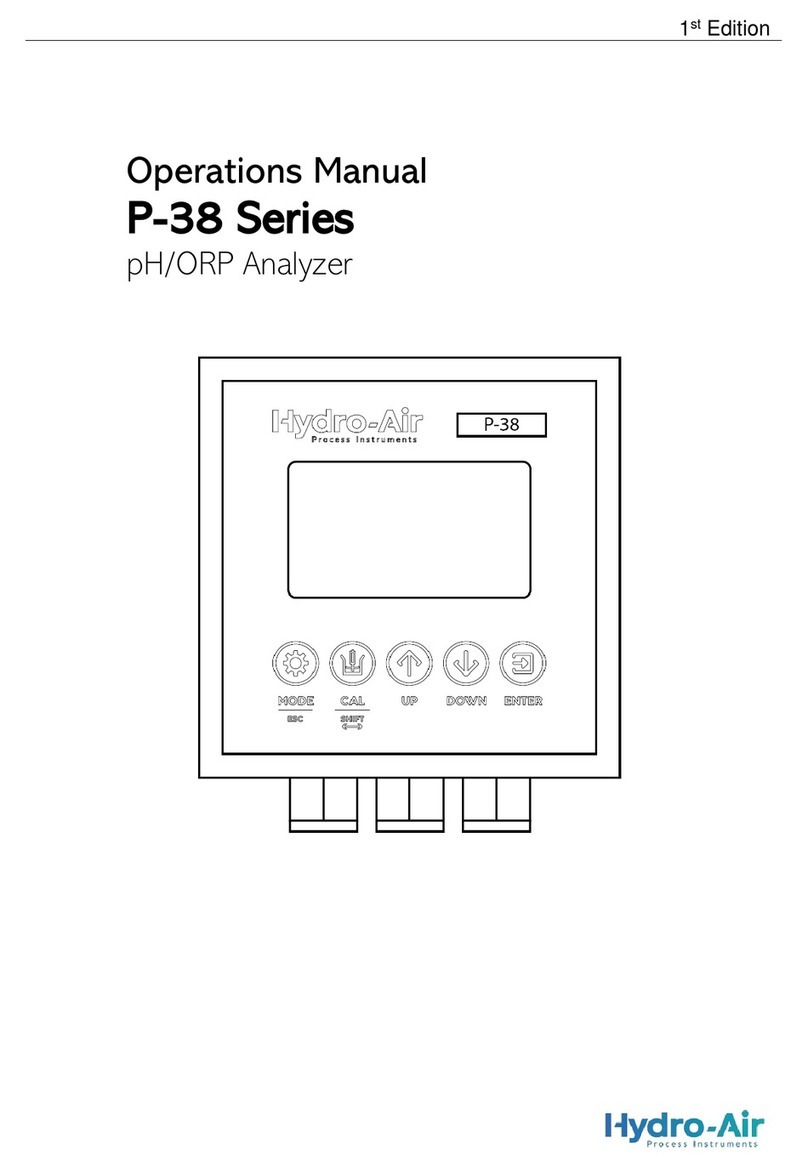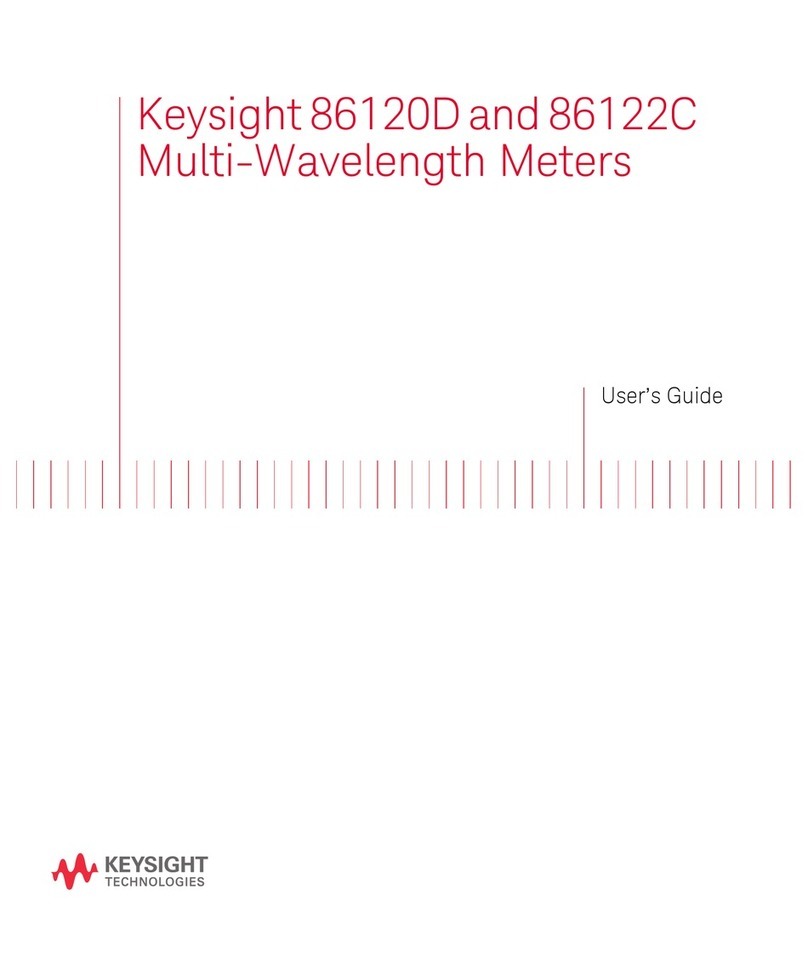
4
Always avoid a room where halide reagents such as an
organochlorine solvent or potassium iodide are used.
In addition, avoid a room into which such a reagent gas may
flow. Failure to observe this may cause trouble such as the
drop in theAnalyzer’s sensitivity.
Cautions on operations and handling
WARNING
The area around the sample inlet becomes hot.
Wear protective equipment such as heat-resistant gloves,
and be careful not to burn yourself. Never manually release
the solenoid lock during measurement because it is very
dangerous.
Be careful not to burn yourself when touching the sample
boat, the mercury collector tube, or the like for measurement
or other work. If you need to handle them, use boat tongs
and wear protective equipment such as heat-resistant gloves.
Heat is vented (venting to general atmosphere) from the
upper back section of theAnalyzer. Be careful not to burn
yourself.
When touching the Analyzer during maintenance, be sure to
confirm that it has been sufficiently cooled. In addition, use
protective equipment such as heat-resistant gloves when
touching it. Otherwise, you may burn yourself.
When you power off theAnalyzer, the surfaces of its housing
may become hot because of remaining heat from the heater.
Ensure that the filter of the rear fan is free of dust.
A clogged filter may cause an abnormal temperature rise at
theAnalyzer, thus leading to great danger.
Use a reagent after obtaining and managing its safety data
sheet (SDS).
Be careful not to burn yourself and ensure not to place any
objects on the housing.
Before conducting any maintenance, remove the power cable
from the Analyzer.
Failure to observe this may cause an electric shock as well as
a short circuit, which leads to a failure.
Do not directly measure any samples decomposed by nitric
acid. Otherwise, heat may be generated from the activated
carbon filter on the exhaust side. Dilute nitric acid until its
concentration drops to 5 wt% or less.




















